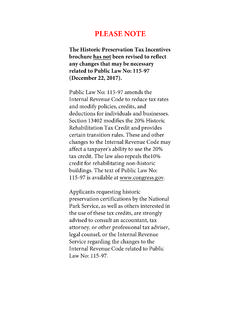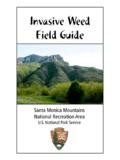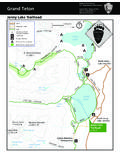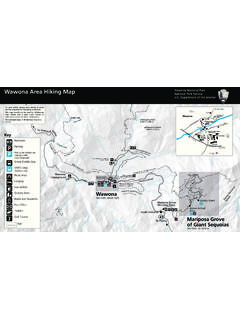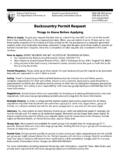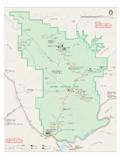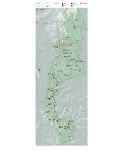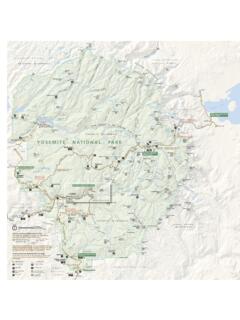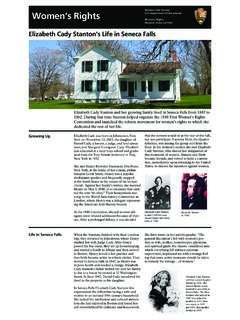Transcription of Native Americans and American History
1 Native Americans and American History Francis Flavin, University of Texas at Dallas Native Americans and their History have interested Indians and non-Indians alike from colonial times through the end of the twentieth century. And, judging by the outpouring of public and private support for the Smithsonian s National Museum of the American Indian, which opened in 2004 across the lawn from the Capitol, this interest continues to flourish. There is a robust, diverse literature discussing Indians and their History . It has deficiencies and limitations, but overall, it is strong enough to satisfy many areas of inquiry in an informative and appealing manner. Historiography and the Study of Native Histories AHistoriography is not the study of History . Instead, it is the study of the writing of History . The way in which an individual, a people, or a nation writes its History reveals much about those who wrote it. The past itself does not change, but the way that people interpret it does.
2 The elements of History that are emphasized or downplayed, and the value judgments assigned to them, all change reflecting the writer s own personal and cultural biases. Of course, Native American History is subject to these historiographical shifts. In fact, it can be argued that no character in the pantheon of American historical figures has been cast and recast, interpreted, reinterpreted, and misinterpreted more frequently than the American Indian. For example, popular depictions of Native American History from the nineteenth century have an Anglocentric perspective. Writers narrated the country s History from a White American perspective, often celebrating America s winning of the West with the national self-confidence characteristic of the era. It was deemed a good thing that American civilization overspread the continent and supplanted the less developed, savage Native inhabitants. In contrast, the 1960s witnessed a significant historiographical shift in how America viewed its past.
3 The civil rights movement drew attention to the often difficult plight of ethnic minorities in America; the anti-war movement depicted the military not as defenders of freedom but as imperialist aggressors; the environmental movement forced people to contemplate alternative lifestyles that were less destructive of nature; and the hippies rejected traditional White Anglo-Saxon Protestant values and attempted to create an alternative culture. Those who interpret the past are often influenced by the social, cultural, and political issues of their own time, and these issues often prompt them to reconsider long-held assumptions within the context of those newly-arisen issues. Not surprisingly, the changes of the 1960s influenced historians, writers, film-makers, and other Americans causing them to view Indians in an increasingly sympathetic and favorable light. They perceived Indians as a historically-oppressed minority victimized by imperial conquest and as a dignified, peace-loving people who lived harmoniously with nature.
4 Furthermore, they became increasingly critical of Europeans, Americans , and the United States government. Over-dramatizing things a bit, some people replaced the old understanding of White man good, Red man bad with Red man good, White man bad. Revising History like this challenges people to contemplate the past from new and often provocative viewpoints. However, replacing one simplified stereotype with another doesn t necessarily lead to better understanding. Nevertheless, after a wave of revisionism has run its course, historians often find themselves in the enviable position of being able to blend the best of the old with the best of the new, and produce more nuanced, thoughtful scholarship. This is precisely where today s historians of Native America find themselves, and they have produced some first-rate Indian histories. Still, there remain significant limitations to understanding Indian History . The most notable is the problem of written sources.
5 Native American peoples, up until the nineteenth century or later, were generally pre-literate. They transmitted memories of the past orally but famines, wars, and diseases extinguished not only people, but Indian histories as well. Consequently, centuries of Indian History have been irretrievably lost. Furthermore, during the contact and post-contact eras, many of those who documented Indian life trappers, traders, missionaries, explorers, travelers, government officials, and scientists were of European descent, and their writings reflected White cultural biases and interests. Although the Indians may have been the subject of these writings, the writings often reflected a non-Indian perspective. One solution to the dearth of written sources is ethnohistory. Ethnohistory, which emerged in the 1950s and 1960s, is a methodology that blends anthropology and History . It encourages its practitioners to use historical sources to answer anthropological questions and, conversely, to use an understanding of a culture and its dynamics to answer historical questions.
6 What results is not necessarily History from an Indian perspective, but rather a History that is sensitive to a tribe s culture. In the second half of the twentieth century, scholars increasingly employed ethnohistorical methods to produce commendably sophisticated studies. The shortage of histories from an Indian viewpoint has been slowly but steadily remedied as time has progressed. In the nineteenth and early twentieth centuries Native peoples either created texts of their own or allowed their testimonies to be transcribed by others. And, in the last several decades, greater numbers of historians of Indian descent have written their own histories, and are enriching the field of Indian History by adding long-absent Native voices. When studying any area of History , first-hand accounts provide the reader a level of understanding and a certain feel that is sometimes absent from synthetic accounts. Native American History is no exception, and those studying it will benefit from reading these first-hand Native accounts.
7 References, Textbooks, and General Overviews Perhaps the most comprehensive and authoritative reference for Native American History is the Handbook of North American Indian series published by the Smithsonian Institution under the general editorship of William C. Sturtevant. This twenty-volume series describes the History , culture, and language of the different Indian tribes of North America. Each volume focuses on the tribes of a particular region, and there are separate volumes on Indian-White relations and Indian languages. Frank W. Porter III edits a fifty-volume series from Chelsea House Publishers entitled The Indians of North America. Each book is authored by an established scholar, is about one hundred pages in length, and includes photographs, drawings, and maps. Most volumes are tribal histories, but there are volumes on thematic topics, too. These books are written for secondary school students and are informative, easy-to-read introductions to Indian histories.
8 Useful survey textbooks include Roger Nichols, American Indians in History , (Norman: University of Oklahoma, 2004); Colin G. Calloway, First Peoples: A Documentary Survey of American Indian History ( boston : Bedford/St. Martin s, 1999); and R. David Edmunds, Frederick E. Hoxie, and Neal Salisbury, The People: A History of Native America ( boston : Houghton-Mifflin, 2006). Philip Weeks s They Made Us Many Promises : The American Indian Experience from 1524 to the Present, 2d ed. (Wheeling, Illinois: Harlan Davidson, Inc., 2002), is a collection of essays highlighting important topics in Indian History that range from Native relations with the colonial French, Spanish, and British up to the efforts to repatriate Native artifacts and burial remains in the end of the twentieth century. These texts are written for college undergraduates, but are useful to general readers as well. Collin G. Calloway s award-winning One Vast Winter Count: The Native American West before Lewis and Clark (Lincoln: University of Nebraska Press, 2003) is a narrative survey of the often-overlooked pre-nineteenth century Native American West.
9 James P. Rhonda s Lewis and Clark Among the Indians (Lincoln: University of Nebraska Press, 1984) discusses the Corps of Discovery s interactions with the Indians they encountered on their epic voyage to the Pacific. One of the most popular surveys of Indian History is Dee Brown s Bury My Heart at Wounded Knee: An Indian History of the American West (New York: Holt, Rinehart, & Winston, 1970). This book reflects the revisionist sentiments of the 1960s, presenting Indian History as a tragic tale of broken treaty after broken treaty, bloody defeat after bloody defeat, and the confinement of one tribe to reservation space after another. The book ends with the 1890 Wounded Knee massacre implying that meaningful Indian History in the West ended in the nineteenth century and overlooks themes of cultural adaptation and persistence. Nevertheless, this evocative, powerfully-written book has remained on must read lists for over three decades. People interested in surveying History through biography will find the following books useful.
10 Alvin M Josephy, Jr. s The Patriot Chiefs: A Chronicle of American Indian Resistance, revised ed. (New York: Penguin Books, 1993) focuses on the confrontational aspects of Indian-White relations, as did Bury My Heart at Wounded Knee. The book includes vignettes on Pontiac, Tecumseh, Osceola, Crazy Horse, Chief Joseph, and others. Josephy was a talented writer, and like Bury My Heart at Wounded Knee, it has become a classic in the field. R. David Edmunds has edited two volumes of biographical essays that present a more multidimensional understanding of Native American leadership. Studies in Diversity: American Indian Leaders (Lincoln: University of Nebraska Press, 1980) is a collection of a dozen essays that examine Native leadership paradigms from the middle of the eighteenth century through the middle of the twentieth. His The New Warriors: Native American Leaders Since 1900 (Lincoln: University of Nebraska Press, 2001) contains fifteen biographical essays that discuss the lives of prominent twentieth-century Indians.
